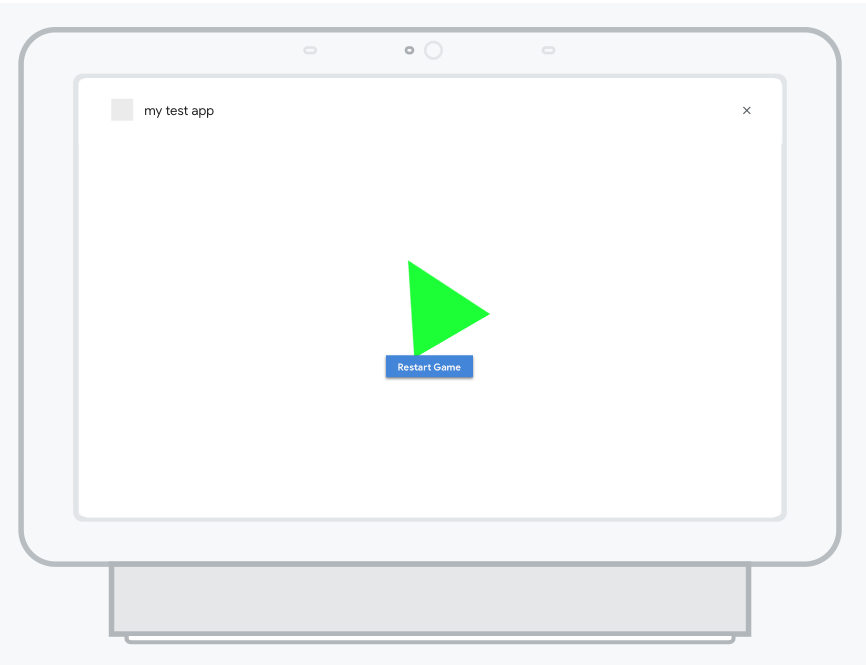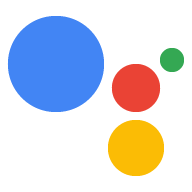本指南逐步介绍了如何设置您的环境,以便使用 Actions SDK 和 Actions Builder。您需要完成以下任务:
- 安装 Node.js:您需要此运行时环境才能使用我们的 Node.js fulfillment 库。
- 安装 Firebase CLI:借助此命令行工具,您可以开发和 将 Firebase 依赖项(例如适用于 Interactive Canvas 的 Web 应用)部署到 Firebase Hosting。
- 安装 gactions 命令行工具:使用 Actions 进行开发时 SDK,您可以使用此工具为 您的 Action。
- 创建 Actions 项目:Actions 项目是一种逻辑容器, 对话型 Action。你必须先在 Actions 控制台中创建一个账号,然后再 可以开始构建
- 初始化和部署示例:这个简单的示例展示了如何获取 开始构建由 Interactive Canvas 提供支持的 Action。
完成本快速入门后,你可以 Actions Builder 的本地开发环境和 Web 体验。
安装 Node.js 和 Firebase CLI
根据 Node.js 下载并安装 Node.js 关于使用我们的执行库的文档您安装的 Node.js 还会 可让您使用 npm 安装 Firebase CLI,并在稍后的时间内 对话执行方式实现。
按照说明安装和设置 Firebase CLI 请参阅 Firebase 文档。通过 Firebase CLI,您可以部署 将 Canvas Web 应用迁移到 Firebase Hosting,并在必要时手动部署 Cloud Functions for Firebase 的 fulfillment。
安装 gactions 命令行工具
通过下载 安装软件包、将其解压缩并配置您的执行路径。
如需安装和配置 gaction,请按照以下步骤操作:
下载适合您操作系统的软件包:
平台 软件包 校验和 Windows 下载 SHA256 Linux 下载 SHA256 Mac OS 下载 SHA256 将软件包解压缩到您选择的位置,并将二进制文件添加到您的 环境变量的
PATH变量。或者,将软件包解压缩到PATH变量中已有的位置(例如/usr/local/bin)。在 Linux 和 Mac 上,根据需要启用执行权限:
chmod +x PATH_TO/gactions
运行以下命令以对 CLI 进行身份验证。此命令 启动身份验证流程,并要求使用网络浏览器:
gactions login
该流程完成后,CLI 会自动进行身份验证。
创建和设置项目
您必须先在 Actions 控制台,并为 gactions 授予对项目的访问权限。要创建和设置 创建项目时,请执行以下操作:
- 转到 Actions 控制台。
- 点击新建项目,输入项目名称,然后点击创建项目。
- 选择一个类别,然后点击下一步。
- 选择 Blank project,然后点击 Start building。
- 按照以下步骤在 Google Cloud 控制台中启用 Actions API 请参阅启用和停用 API。 此操作可让 gaction 与您的项目交互。
获取 Hello World 示例
Hello World 交互式示例展示了如何构建简单的 Action 构建一个由 Interactive Canvas 提供支持的 Action。
创建一个空目录,并在以下位置初始化 Interactive Canvas 示例: 该目录下。例如,以下代码会在
interactive-canvas-sample/目录,作为示例 完整说明:gactions init interactive-canvas --dest interactive-canvas-samplecd interactive-canvas-sample打开
interactive-canvas-sample/sdk/settings/settings.yaml文件并 将projectId字段的值更改为您的项目 ID。
部署并测试示例
设置完示例后,您可以部署 Interactive Canvas Web 应用,并 您的 Actions 项目。此过程会创建 Action 的草稿版本 可以部署到 Actions 模拟器以进行预览和测试的项目:
从
interactive-canvas-sample/目录运行以下命令 部署 Interactive Canvas Web 应用(public/的内容) 目录)。firebase deploy --project PROJECT_ID --only hosting您可以在 在浏览器中使用 Firebase CLI:
https://PROJECT_ID.web.app。打开
interactive-canvas-sample/sdk/webhooks/ActionsOnGoogleFulfillment/index.js文件并 将CANVAS_URL变量的值更改为您项目的 Web 应用网址。const CANVAS_URL = 'https://PROJECT_ID.web.app';从
interactive-canvas-sample/sdk/目录运行以下命令 将 Actions 项目的本地版本作为 草稿版本:gactions push从
interactive-canvas-sample/sdk/目录运行以下命令 命令,以在模拟器中测试您的 Actions 项目:gactions deploy preview打开命令行工具返回的链接以转到模拟器。
在模拟器中,输入 "Talk to Interactive canvas sample" 以启动该 Action。您 应该看到一个旋转的三角形,该旋转三角形由部署于
<ph type="x-smartling-placeholder">https://PROJECT_ID.web.app</ph> 
图 1.用于预览 Actions 项目的模拟器

